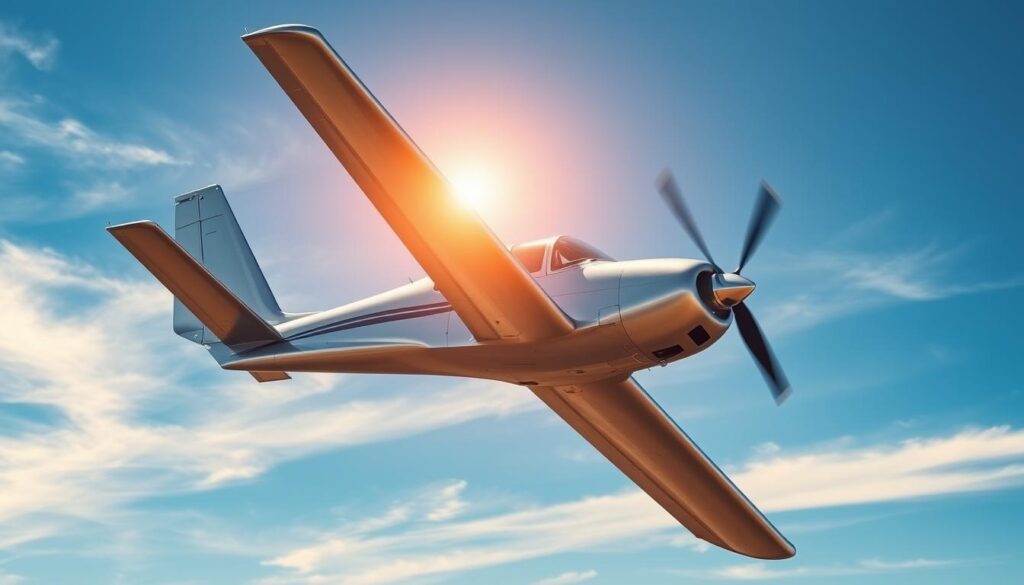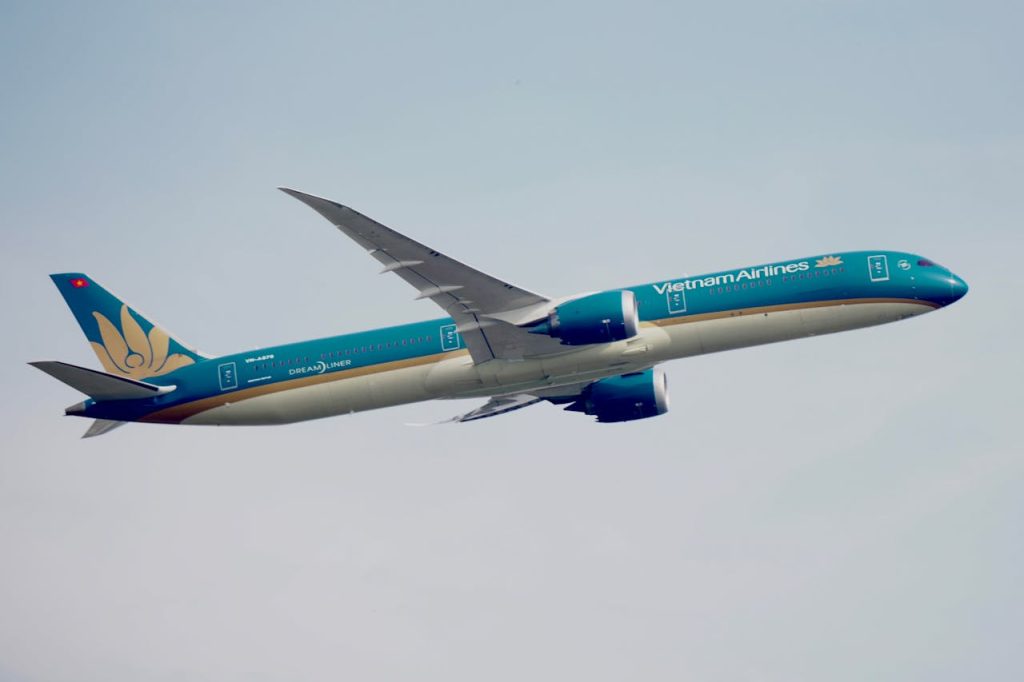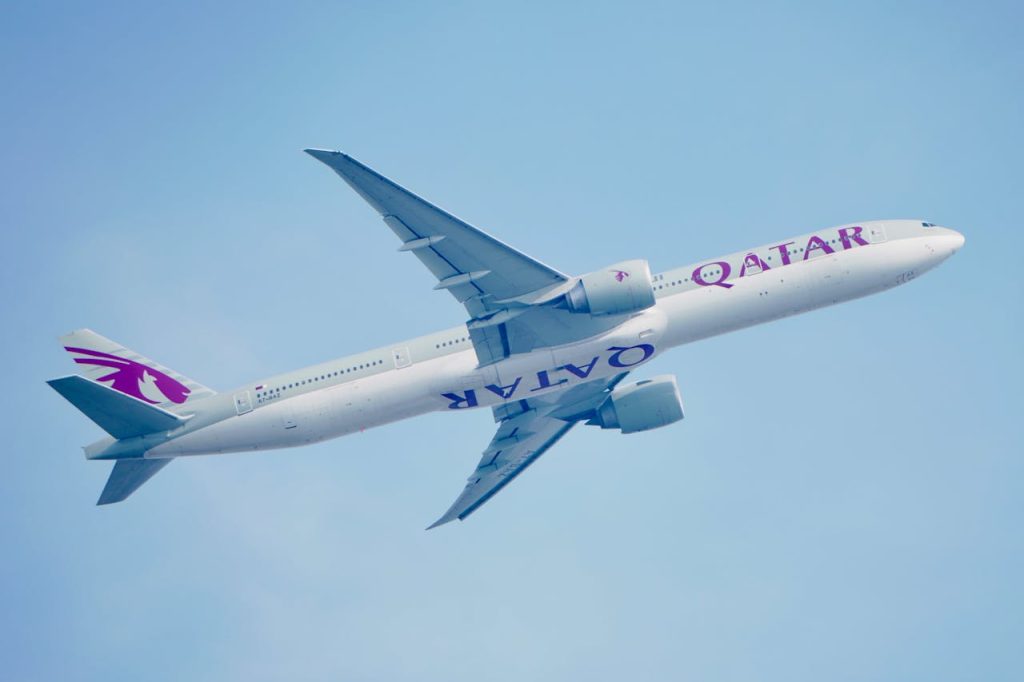The Cessna Bird Dog has been a key player in aviation since it was first introduced. This aircraft has left a lasting impact on the industry. It was used for many tasks, like being a liaison, observation, trainer, and reconnaissance plane.
Let’s look into the history and importance of the N19LD -1951 CESSNA L19305A BIRD DOG. We’ll see how it helped shape aviation and its lasting influence. This model shows the innovative design and functionality of its time.
Key Takeaways
- The Cessna Bird Dog played a crucial role in military operations.
- It served multiple purposes, including liaison, observation, and training.
- The aircraft’s design and functionality contributed significantly to aviation history.
- The N19LD -1951 CESSNA L19305A BIRD DOG is a notable example of vintage aviation.
- Its legacy continues to influence contemporary aviation practices.
Overview of the CESSNA L19305A BIRD DOG
The CESSNA L19305A BIRD DOG is a standout in aviation history. It’s a vintage military aircraft with a lasting impact.
Let’s dive into its historical context. The CESSNA L19305A BIRD DOG was key for liaison and observation missions. It played a big role in military operations.
Historical Significance
The CESSNA L19305A BIRD DOG has a rich history. It was used a lot during the Korean and Vietnam Wars. Its ability to land on short, rough fields made it very useful.
“The Cessna L-19/O-1 Bird Dog was a liaison aircraft used by the United States Army and Air Force during the Korean and Vietnam Wars.”
This aircraft was very durable and versatile. It could do many things, like spot artillery and carry people.
Design Specifications
The design of the CESSNA L19305A BIRD DOG is simple and tough. It has a single engine and can be flown by one person. It also has a fixed undercarriage.
The aircraft has a Continental O-470 engine. This engine is reliable and powerful for its tasks.
Purpose and Usage
The main job of the CESSNA L19305A BIRD DOG was to connect ground troops with command centers. It provided real-time reconnaissance and helped with communication.
It wasn’t just for the military. It was also used for civilian purposes. This included medical evacuations and helping civilian agencies with reconnaissance.
Key Features of the N19LD Model
The CESSNA Bird Dog, specifically the N19LD model, is known for its outstanding design and abilities. It has caught the eye of many collectors and enthusiasts. Let’s explore what makes the N19LD model special.
Engine and Performance
The N19LD model’s engine is key to its performance. The CESSNA L19 has a strong engine for its military tasks. Here are some important engine and performance features:
- Powerful Engine: The aircraft has a reliable engine for consistent performance.
- Climb Rate: The N19LD model has a fast climb rate, perfect for various missions.
- Cruise Speed: It has a good cruise speed, making it great for long trips.
Design and Build Quality
The N19LD model’s design and build show its durability and long life. As a vintage airplane for sale, its construction is impressive:
- The airframe is made of high-quality materials that have lasted for years.
- Its design makes maintenance and repairs easy, important for vintage aircraft owners.
- The build quality helps with its stability and performance in the air.
The N19LD model’s design shows careful attention to detail. This has made it a reliable and capable aircraft.
The Role of the L19 in Military Aviation
The CESSNA L19, known as the Bird Dog, was key in military aviation history. It was used by the U.S. Armed Forces for support in operations. This included spotting artillery, reconnaissance, and carrying personnel.
The L19 started serving in the U.S. Armed Forces in the 1950s. It had a long and notable career in military aviation. Its durability and versatility made it perfect for many tasks, like training pilots and observing missions.
History in the U.S. Armed Forces
The CESSNA L19 was introduced in the U.S. military during the Korean War. It was used for observation and liaison duties. Its ability to land on short, rough fields was a big plus in combat zones.
Over time, the L19 got several upgrades to improve its performance. These changes helped it stay effective in supporting troops and gathering important reconnaissance data.
Training and Observation Missions
The L19 played a big role in training pilots. Its stable flight characteristics and easy handling made it a great teacher. It helped pilots learn how to do observation and liaison tasks.
The L19 was also used a lot for observation missions. It could fly low and slow, gathering enemy information without being seen. This made it very useful for these tasks.
The CESSNA L19 Bird Dog’s legacy is still celebrated today. Many of these aircraft are still flying, showing how well-designed and effective they were.
Flight Characteristics of the N19LD
The N19LD Cessna Bird Dog is a joy to fly. It’s perfect for both experienced pilots and those who love vintage aircraft.
This classic plane is known for its great maneuverability. It was made to be very responsive. This lets pilots do many tasks with precision.
Maneuverability
The N19LD’s light weight and strong engine make it very agile. It can make sharp turns and quick changes in direction. This is great for training and observation missions.
- Excellent roll rate, allowing for quick turns.
- Responsive controls, enhancing pilot confidence.
- Stable in various flight conditions, ensuring safety.
Its agility and responsiveness make the N19LD a favorite. Pilots who love flying a Cessna Bird Dog enjoy it a lot.
Handling in Various Conditions
The N19LD handles well in different weather. Its strong design and construction make it stable and reliable.
Some key aspects of its handling include:
- Stable in turbulent air, providing a smooth ride.
- Effective controls, even at lower speeds.
- Predictable behavior, allowing pilots to anticipate and react to changes.
Whether flying in clear skies or through clouds, the N19LD is trustworthy. Its ability to handle various conditions shows its durable design and the creativity of its makers.
In conclusion, the N19LD is an outstanding vintage aircraft. Its maneuverability, handling, and performance make it a favorite classic plane among aviation fans.
Restoration and Maintenance of Vintage Aircraft
Restoring a vintage aircraft is a detailed process. It needs careful planning, skilled craftsmanship, and a love for aviation history. Owners of planes like the N19LD CESSNA L19 must focus on restoration and maintenance to keep them in great shape.
Common Restoration Practices
Restoring a vintage aircraft means understanding its original design and build. Common practices include finding original parts or making replicas, fixing or replacing damaged parts, and checking that all systems work right.
Finding the right materials and parts is a big challenge. Many restorers look for them in salvage yards, online, and from specialized suppliers. Some owners might make parts themselves or get custom work done.
“Restoration is not just about making the aircraft look good; it’s about ensuring it is safe to fly and true to its original specifications.” – Aviation Expert
Maintenance Tips for Owners
Regular maintenance is key for vintage aircraft to last and stay safe. Key maintenance tasks include checking the engine, propellers, and control surfaces, and inspecting the electrical and hydraulic systems regularly.
- Keep detailed records of all maintenance activities.
- Regularly inspect the aircraft for signs of wear or damage.
- Use genuine or high-quality aftermarket parts.
- Stay informed about airworthiness directives and service bulletins.
By following these tips and caring for aviation history, vintage aircraft owners can enjoy their planes for many years. Whether you’re working on a CESSNA L19 or another model, the joy of ownership is worth the hard work.
Comparison with Other Aircraft Models
The CESSNA L19 Bird Dog is a standout in military aviation. We’ll compare it to other models to see its strengths and weaknesses. We’ll look at the N19LD model against other military liaison aircraft and its performance.
CESSNA Vs. Other Military Liaison Aircraft
The CESSNA L19 Bird Dog was made for military tasks like observation and reconnaissance. It compares well to other aircraft like the Stinson L-5 Sentinel and the Piper L-4 Grasshopper. The Bird Dog is known for its durability and versatility.
The Stinson L-5 Sentinel had a more powerful engine. But the Bird Dog was praised for its easy handling and maneuverability. The Piper L-4 Grasshopper was simple and rugged, but the Bird Dog outperformed it in tough conditions.
| Aircraft Model | Engine Power | Maneuverability | Service Ceiling |
|---|---|---|---|
| CESSNA L19 Bird Dog | 213 hp | High | 18,000 ft |
| Stinson L-5 Sentinel | 285 hp | Moderate | 21,000 ft |
| Piper L-4 Grasshopper | 65 hp | High | 12,000 ft |
Performance Metrics Overview
The CESSNA L19 Bird Dog’s performance is impressive. It has a climb rate of 1,150 feet per minute and a service ceiling of 18,000 feet. These numbers show its capabilities for its time.
Comparing these metrics, the Bird Dog was well-suited for its roles. Its range of about 450 miles made it effective in various military operations.
Market Value and Collectibility of the N19LD
To understand the N19LD’s market value and collectibility, we need to look at its history and current trends. The N19LD, a 1951 CESSNA L19-305A BIRD DOG, holds a special place in aviation history. Its value is shaped by many factors.
Current Market Trends
The market for vintage aircraft like the N19LD is small but lively. People who collect and love these planes are willing to pay more for them. The demand for vintage military planes is going up. This is because of their historical importance and the nostalgia they bring.
Some important trends in the market include:
- A growing interest in restoring and flying vintage military aircraft
- Increased participation in aviation events and airshows
- Rising prices for rare and historically significant models
Factors Influencing Collectibility
Several factors affect the N19LD’s collectibility:
- Historical Significance: The aircraft’s history, including its use in significant military operations or by notable figures, can greatly enhance its value.
- Condition and Originality: The aircraft’s condition, including its original parts and restoration quality, plays a crucial role in determining its value.
- Rarity: The fewer models available, the higher the value of each individual aircraft.
- Provenance: Documentation proving the aircraft’s history and authenticity can significantly impact its collectibility.
The N19LD, being a well-preserved example of a 1951 CESSNA L19-305A BIRD DOG, benefits from its historical significance and the growing interest in vintage military aircraft. As such, it represents a valuable opportunity for collectors and enthusiasts looking to own a piece of aviation history.
Community and Events for CESSNA Enthusiasts
CESSNA Bird Dog fans have a lot to celebrate. They’re part of a community that loves vintage aircraft. It’s more than just owning or flying a classic plane. It’s about sharing a passion that brings people together worldwide.
Events and online platforms are key to this community. They offer chances for people to meet, share stories, and learn from each other.
Aviation Meets and Displays
Aviation meets and displays are big events for CESSNA fans. They come together to show off their planes. It’s a time to share stories and experiences.
Key Features of Aviation Meets:
- Aircraft Displays
- Fly-ins and Fly-bys
- Restoration Workshops
- Networking Opportunities
These meets are great for seeing vintage aircraft up close. You can learn about their history and how to restore them.
Online Forums and Groups
Online forums and groups are also vital for the CESSNA community. They let people connect, ask questions, and share knowledge.
Popular Online Platforms:
| Platform | Description |
|---|---|
| Active community forums discussing various aspects of CESSNA ownership and aviation. | |
| Facebook Groups | Private and public groups dedicated to CESSNA enthusiasts, sharing news, events, and personal stories. |
| Aviation Forums | Specialized forums where CESSNA owners and pilots share technical knowledge and advice. |
These online platforms add to the excitement of the CESSNA community. They keep the community vibrant and connected all year.
How to Purchase a CESSNA L19
Buying a CESSNA L19 is a big decision for anyone interested in aviation history. It’s important to understand the process, whether you’re an experienced buyer or new to the scene.
Tips for First-Time Buyers
First-time buyers should start by researching the market for vintage airplanes for sale. It’s key to know the current value of the CESSNA L19 and what to look for during inspections.
We recommend:
- Inspecting the aircraft thoroughly for any signs of damage or needed repairs.
- Reviewing the aircraft’s maintenance history to ensure it has been properly cared for.
- Considering the costs associated with maintaining a vintage aircraft.
Key Considerations Before Buying
Before buying, consider several important factors. The N19LD -1951 CESSNA L19 305A BIRD DOG is a classic plane with a rich history. Its value goes beyond its functionality, also including its historical significance.
Some key considerations include:
- The aircraft’s condition and any restoration work it may require.
- The availability of spare parts and the cost of maintenance.
- The legal and regulatory requirements for owning and operating a vintage aircraft.
By carefully evaluating these factors, buyers can make an informed decision when purchasing a CESSNA L19.
Notable Owners and Pilots of the N19LD
The Cessna Bird Dog N19LD has a rich history. It has been owned and flown by remarkable individuals. Their stories are woven into the aircraft’s legacy.
Famous Pilots
Many famous pilots have flown the N19LD. They have appreciated its performance and historical value as a military aircraft. Brigadier General Charles E. Yeager, known for breaking the sound barrier, has also flown it. His experience shows its importance in aviation history.
Other pilots have used it for military and civilian tasks. Their stories add to the aircraft’s legendary status.
Unique Stories and Experiences
The N19LD has been part of many memorable flights. For example, one owner remembers a flight over the Grand Canyon. This highlights the aircraft’s agility and the pilot’s skill.
Here are a few more stories:
- A pilot who flew the N19LD in a vintage aircraft rally praised its handling and visibility.
- An owner restored the aircraft from a ground state. They shared the challenges and rewards of bringing it back to flight.
- A group of enthusiasts organized a flyover with multiple Cessna Bird Dogs, including the N19LD. They commemorated a significant event in aviation history.
These stories have made the N19LD a cherished part of aviation history. It is a valuable piece of military aircraft heritage.
| Pilot | Experience with N19LD | Notable Aspect |
|---|---|---|
| Brigadier General Charles E. Yeager | Flew the Cessna Bird Dog | Historic significance |
| Anonymous Pilot | Flew over the Grand Canyon | Maneuverability |
| Vintage Aircraft Rally Participant | Participated in a vintage rally | Handling and visibility |
The N19LD is a symbol of aviation excellence. It is cherished by pilots and enthusiasts. Its legacy shows the Cessna Bird Dog’s enduring appeal.
Future of the CESSNA L19 in Aviation
The CESSNA L19 is a key part of aviation history. Its legacy lives on through preservation and new ideas. The N19LD, a 1951 CESSNA L19305A BIRD DOG, shows the lasting charm of old planes.
Preserving the Legacy
Keeping the CESSNA L19 alive means careful restoration and upkeep. This makes sure these planes stay in good shape and thrill people at air shows. By saving these planes, we celebrate their place in aviation history.
Innovations and Upgrades
New tech and updates are making the CESSNA L19 better and safer. Yet, it still keeps its classic beauty. These changes will keep the CESSNA L19 loved by fans and history buffs.
Looking ahead, the CESSNA L19 will stay a vital part of our aviation heritage. Its deep history and ongoing importance in vintage aircraft are clear.


